Editorial Note: We are an inventory management software provider. While some of our blog posts may highlight features of our own product, we strive to provide unbiased and informative content that benefits all readers.
Retail inventory management is the process of managing inventory for retail shops including tracking, controlling, and optimizing inventory levels.
A retail inventory management system seamlessly tracks inventory on hand and incoming and outgoing inventory activities, helping to optimize inventory levels with less stock but no stockouts. In 2020, statistics showed that the overall value of products going out of stock reached 1.14 trillion U.S. dollars worldwide. An excellent retail inventory management system helps you optimize inventory levels to avoid both stockouts and overstocks.
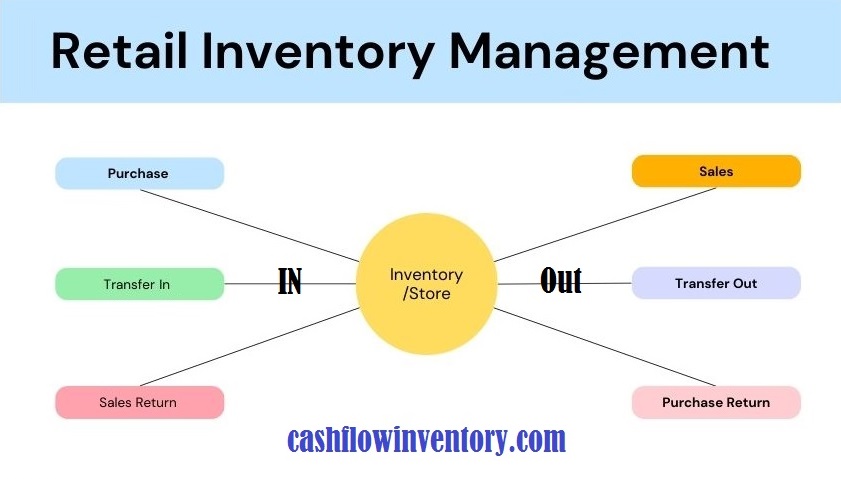
Types of Retail Inventory:
Basically, there are five different types of retail inventory used by retailers.
- Raw materials: These are the basic materials that you need to create your product. For example, if you are a clothing company, your raw materials would be fabric, thread, and buttons.
- Work-in-progress: This is inventory that is in the process of being turned into a finished product. For example, if you are a furniture company, your work-in-progress inventory would be pieces of wood that are cut and shaped into a table.
- Finished goods: This is inventory that is ready to be sold to customers. For example, if you are a bakery, your finished goods would be cakes, cookies, and bread.
- MRO: This stands for “maintenance, repair, and operations.” This type of inventory includes all the materials, parts, and supplies that you need to keep your facility running smoothly.
- Packing materials: Packing materials are the materials used for packing items before delivery. This type of inventory is mostly used in e-commerce businesses.
Basic Retail Inventory Operations:
There are different types of retail businesses based on their size, policies, and strategies, such as convenience stores, specialty stores, supermarkets, drug stores, eCommerce stores, and discount stores. Regardless of the type or size of your business, the basic inventory operations are the same for all retailers. You must manage, control, and track inventory activities to ensure proper inventory levels and maximize profits without compromising on product quality.
Most retailers make a profit by purchasing products from suppliers and selling them to customers. However, some retailers have production facilities where they purchase raw materials, manufacture finished goods, and sell them directly to customers.
Purchasing is not simple. You need to analyze market or customer demand for the products you want to buy, find reliable suppliers or vendors offering quality products at reasonable prices, consider inventory costs, minimum delivery time, and payment terms and methods.
Selling products is more than just exchanging money for goods. Your products or services should provide value by solving problems or making customers’ lives easier. Ultimately, customer satisfaction depends on the quality of your products.
As a retailer, purchasing better products can improve your sales.
1. Purchase:
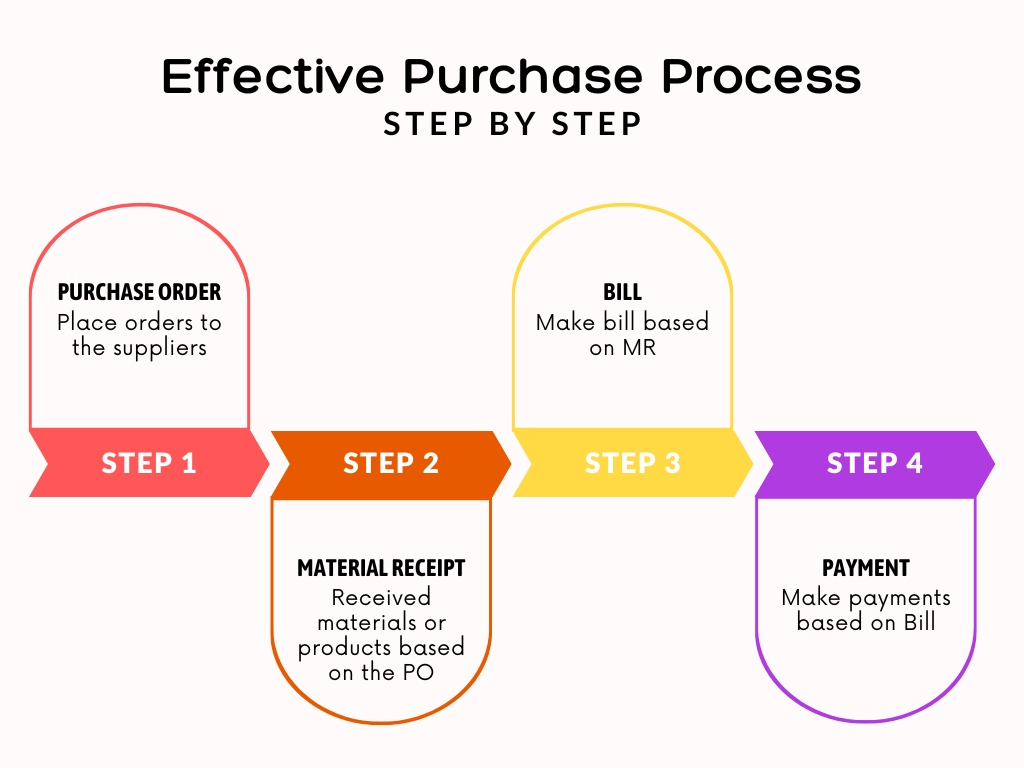
Purchase order or PO: To purchase inventory, place orders with suppliers based on your requirements, including delivery and payment terms.
Material Received or MR: After placing an order with a supplier, you will receive materials or products based on the purchase order. You may receive the materials fully or partially.
Purchase Bill or BL: Create a bill based on the materials received (MR).
Purchase Payment: Make payments to suppliers based on the bill received for the materials or products purchased.
2. Sales:
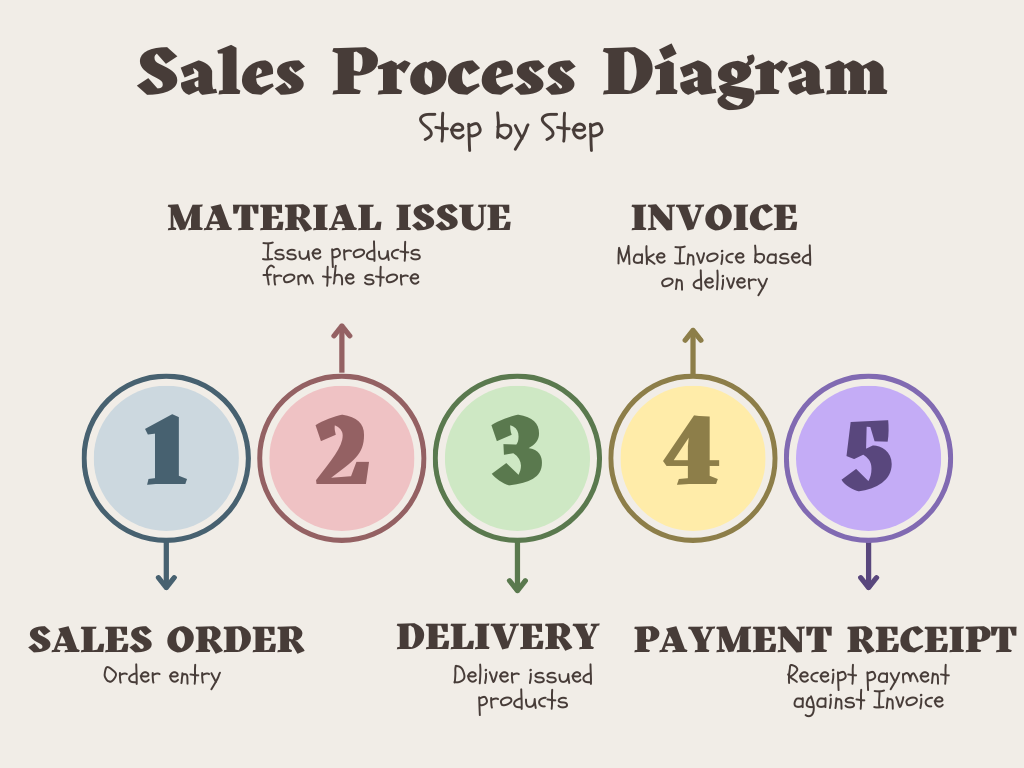
Sales Order or SO: Create an entry order based on the specific requirements of the customer for the products or services they have requested.
Material Issue or MI: Release or dispense the products from the inventory or store based on the sales order received from the customer, ensuring that the correct quantity and specifications are provided.
Delivery Order or DO: Generate a delivery order to arrange for the transportation and delivery of the issued products to the customer, ensuring that the order is fulfilled accurately and promptly.
Invoice or IN: Create an invoice based on the delivery order, accurately reflecting the products and services provided to the customer, as well as any applicable taxes and fees.
Payment Received or PR: Receive payment against the invoice, ensuring that the payment amount matches the invoiced amount and that all payment details are accurately recorded.
N.B: We will now discuss retail inventory management, which explains your inventory management workflows. To ensure quick and efficient sales entry, you can use invoicing software or a POS system with barcode scanning integrated with inventory management software.
3. Return:
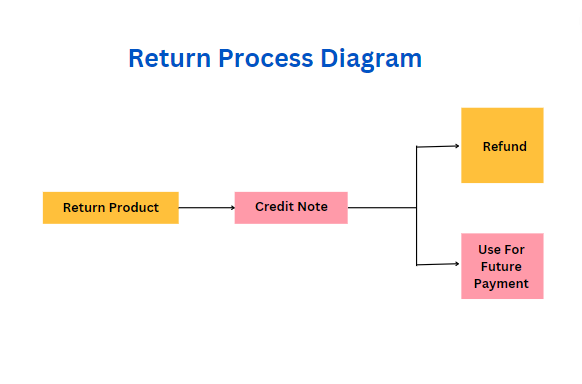
Return Product: Return the product to your supplier (in the purchase process) or receive product returns from your customers (in the sales process).
Credit Note: A credit note is a financial document for the returned product.
Refund or use for future payment: You can refund the amount based on a credit note for returned products in the purchase process or provide money back to your customer in the sales process. Alternatively, the balance can be used for future purchase payments in the purchase process, or customers can use it to buy products from you in the sales process.
4. Stock Transfer:
If you have multiple locations or warehouses, you may need to transfer stocks from one location to another to meet customer demand fluctuations. It’s important to rearrange stock levels in different locations based on trends and demand to ensure optimal inventory levels.
Stock transfer is a simple process in a retail store. Products are issued based on a requisition, then a transfer order is added, and finally, products are received from the demanded location.
Transfer Issue: Issue products based on demanded location’s requirements.
Transfer Order: Make a Transfer Order based on issued products.
Transfer Received: Receive products at the demanded location.
5. Production:
The production process is the process of converting raw materials into finished products. It includes all the steps from acquiring raw materials to delivering the finished product to the customer.
Bill of Materials(BOM): A bill of materials or product structure is a list of the raw materials, sub-assemblies, intermediate assemblies, sub-components, parts, and the quantities of each needed to manufacture an end product. A bill of materials is often used in manufacturing when a product is created using multiple components.
Production Order: A production order is a document that tells a manufacturer or other production facility what to produce, how much to produce, and when to produce it. Production orders are typically generated by businesses that need to maintain inventory levels or produce goods on a schedule.
Purchase, Sale, Return, Transfer, and Production are the five basic inventory tasks for retail inventory management.
Here, it’s important to buy the right products in the right quantities at the right time to meet customer demands as well as make profits.
That’s why knowledge of inventory management is very important for retailers.
Four types of Inventory Methods:
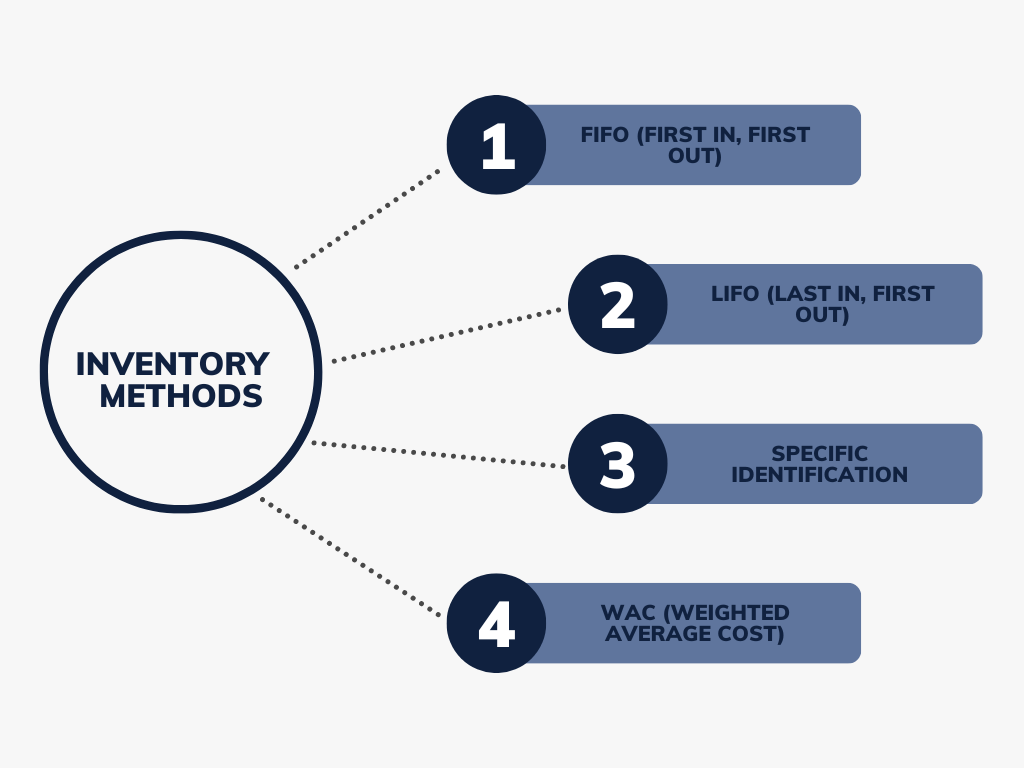
There are four common inventory methods used to manage inventory inflows and outflows. Businesses use these four methods to track which products come in and which ones go out. These methods include FIFO (First In, First Out), LIFO (Last In, First Out), Specific Identification, and WAC (Weighted Average Cost).
1. FIFO (First In, First Out):
This method sells the inventory that comes in first. For example, if you purchase 3 iPhones of a specific model in January and sell 2 phones in January, you will have 1 iPhone in storage at the beginning of February. When you purchase 5 more iPhones at the beginning of February and a customer comes to your store and buys 1 of these models, you will sell the phone that came in January. This means you sell the product that you purchased first.
2. LIFO (Last In, First Out):
This is the opposite method of FIFO (First In, First Out). It means selling the product that came in last. The LIFO (last in, first out) inventory method is used for non-perishable goods and uses current prices to calculate the cost of goods sold.
3. Specific Identification:
Specific Identification is an inventory method where a business identifies inventory inflows by using a unique identification number, including a Batch or Lot number, and keeps a record of these numbers when making sales. For perishable products, this is an effective inventory method where businesses sell the products that will expire first.
4. WAC (Weighted Average Cost):
When businesses are not using any of the methods mentioned above, they can calculate the cost of goods sold using WAC (Weighted Average Cost). This method calculates the average cost per unit by dividing the total cost by the total number of units purchased during the accounting period.
Retail Inventory Method:
The retail inventory method refers to the calculation of the current inventory value that is available for sale. This is an accounting method used by retail stores to calculate the value of the ending inventory. Generally, retail stores calculate ending inventory at the end of an accounting period.
At the end of an accounting period, retailers calculate accounting statements, including the ending balance of the inventory.
The retail inventory method provides an approximate value of the current inventory available for sale based on the system data. However, the actual inventory stored in your warehouse may differ from the system data due to shoplifting, damage, or misplacement. Therefore, it’s important to periodically count your inventory physically and check the data with your system. If needed, make adjustments; this is called inventory reconciliation.
Retail Inventory Method Example of Calculation:
Cost to retail ratio=(Beginning inventory at Cost+New Purchases at Cost)/(Beginning inventory at Retail +New Purchases Cost at Retail).
Imagine,
the beginning inventory at cost= $100000;
new purchases at cost= $80000;
beginning inventory at retail= $170000;
new purchases at retail= $130000;
Then, Cost to retail ratio=($100000+$80000)/($170000+$130000 )100;
=($180000/$300000)100;
=60%
If Sales=$200000;
Ending inventory at retail=$300000-$200000;
=$100000;
Ending inventory at cost=Ending inventory at retail*Cost to retail ratio;
=$100000*60%;
=$60000;
Retail Inventory Optimization:
Inventory optimization is an important part of every business including retailers. Inventory optimization means optimizing your inventory levels based on demands where you don’t have overstock or excess inventory but have enough inventory to meet your needs.
To optimize inventory levels, it is important to create a purchasing plan based on demand. However, this is often the most challenging aspect of retail inventory management since demand tends to fluctuate frequently. Additionally, many local retailers may not have the skilled manpower necessary for effective inventory optimization.
The good news is that there are now many software-as-a-service (SaaS) providers offering affordable demand forecasting and inventory optimization solutions. These tools eliminate the need for deep knowledge and expertise to optimize inventory levels. Instead, the software can automatically generate purchase plans based on previous sales data.
Retail Inventory Management:
“Out-of-stocks could be costing retailers $1T.”
Retail inventory management is an essential process that ensures smooth inventory management practices, allowing businesses to optimize their inventory levels and streamline stock in and outflows, leading to positive cash flows. Successful companies employ various inventory management processes, some of which are highlighted below.
Inventory Management Processes:
Here is a quick overview of some important inventory management processes:
1. Perpetual Inventory Management:
A perpetual inventory system tracks and updates inventory records in real-time. When stock is received or sold, the inventory data is immediately entered into the inventory management system, providing real-time updates. This allows businesses to simply enter transactions and receive up-to-date inventory data.
Using a cloud-based perpetual inventory management system is an easy and affordable solution for managing inventory.
2. Just-In-Time Inventory Management:
Just-in-time (JIT) inventory management is a system in which inventory is ordered and received as it is needed, minimizing the amount of stock on hand. This approach can help businesses save on storage costs and reduce the risk of inventory obsolescence, as products are ordered and delivered just in time to meet demand.
3. ABC Inventory analysis:
ABC analysis is an inventory management technique that classifies inventory items based on their importance to the business. The items are categorized into three groups: ‘A’ items are the most important based on demand, ‘B’ items have less importance than ‘A’, but more than ‘C’, and ‘C’ items are the lowest priority.
By conducting ABC analysis, inventory managers can prioritize their efforts and allocate resources based on the importance of each category, ensuring that the most important items are always in stock and available to customers.
4. Open-to-buy (OTB):
Open-to-buy (OTB) is a popular inventory management strategy often used by retailers. It refers to the amount of merchandise a buyer can purchase within a specific time frame while remaining within budget and avoiding overstock or stockouts. OTB is calculated based on factors such as historical sales data, market trends, and inventory levels. By using an OTB system, retailers can ensure they have the right amount of inventory to meet demand while avoiding excess inventory and capital tie-up.
OTB = planned sales + planned markdowns + planned end of month inventory – beginning of month inventory.
5. Consignment Inventory:
Consignment inventory is a supply chain model where the supplier retains ownership until the products are sold. In this model, products are owned by the supplier but sold by the retailer. This eliminates the need for the retailer to invest a large amount of capital to purchase and store inventory to resell to customers.
6. VED analysis:
VED analysis categorizes inventory based on its functional importance into three categories Vital, Essential, and Desirable. Vital is the most important category, essential is less important than vital, and desirable is at the bottom based on importance.
Terms Related To Retail Inventory Management:
Stock-out:
When a product has more demand than stock on hand, it is called a stock-out. This occurs due to a lack of demand forecasting and inventory optimization or unexpected trends. A stock-out situation has dual impacts: one is losing profits, and the other is the loss of brand loyalty.
Excess stock:
To avoid stock-outs, sometimes inventory managers store more inventory than is needed to meet demand. These unnecessary stocks tie up capital and increase costs, including carrying and holding costs. This is also known as overstock, excessive stock, or excess inventory.
Deadstock:
Deadstock refers to unsold items with no possibility of being sold soon. When a product or item remains in stock without any sales for a certain period, it is classified as deadstock. It is important to avoid deadstock and take immediate steps to remove these stocks to reduce holding costs.
Economic order quantity:
The optimum order quantity for specific products is the quantity where your Cost of Goods Sold (COGS) is at a minimum, taking into account purchase costs, carrying costs, and inventory storage costs. Economic order quantity helps you maximize your profits and compete with competitors.
Lead Time:
The number of days it takes to receive deliveries after placing purchase orders.
Lead Time Demand:
The demand for specific products during the lead time.
Safety Stock:
Safety stock is the minimum quantity of inventory kept to fulfill demand. It is calculated from previous historical data for future preparation. The purpose of safety stock is to ensure that there is enough inventory to prevent stock-outs.
Reorder Point:
The reorder point is the stock level at which it’s time to reorder an item. In other words, the reorder point is the quantity of inventory at which it’s necessary to reorder to maintain proper inventory levels.
Inventory Management Software: How it Impacts Retail Businesses
Retail inventory management software is a computerized system specifically designed for retail stores to manage, track, and control inventory activities.
Inventory management software is an excellent solution for retailers where inventory balancing is a tough act to fulfill demand with less stock but no stock-out. Inventory management software makes it easy to control inventory activities like inventory tracking, inventory auditing, orders, and fulfillment.
An Advanced Inventory Management System:
The key activities of an inventory management system help to organize, monitor, manage, and analyze inventory data. System requirements include:
- A simple and easy-to-use user interface, with no need for advanced training, support, or documentation.
- Reliable, real-time data with secure database management.
- Advanced analytics and reports to help control and monitor inventory activities.
- The ability for administrators to easily add and manage users and permissions.
- Reducing manual processes and automating inventory activities as much as possible. Automated features that minimize manual tasks, like forecasting demand and generating purchase and production plans.
Benefits of Using Inventory Management Software:
Inventory Management Software makes it easy to organize, manage, and optimize inventory levels that can improve efficiencies and reduce costs and finally give competitive advantages over your competitors.
1. Organize and Store Data Smartly:
Technology makes information management easy, smart, and concise, storing tons of information in small electronic chips and removing tons of paper. Easy to manage, search, update, and store data. Everyday inventories in and outs need to store data for tracking activities and advanced reporting. Modern inventory management software makes it easy and smart.
2. Demand Planning:
Some inventory management software can forecast the demand for specific products. There are many different techniques used to forecast future demand, including time series and causal forecasting. With robust inventory management software, it’s possible to effectively control your stock levels based on demand and maximize your profitability.
3. Optimize Inventory Levels:
Smart inventory management ensures optimized stock levels that help to avoid understocks and overstocks. For that, it’s possible to meet customer demands with less inventory and capital. Ensuring product availability ensures good user experiences that can impact positively brand value.
4. Improve Efficiencies:
The software makes your business operations easy and fast, along with ensuring accuracy. Modern inventory management software organizes your inventory activities in a simple auto-oriented structure where it’s easy to manage activities with fewer costs. It increases your profit margins and improves efficiencies to ensure sustainable business growth. 50% of startups failed within five years, and 65% within 10 years (According to U.S. Bureau of Labor Statistics).
5. Bar codes, QR codes, Tagging, and Scanning:
Barcodes and QR codes help manage inventories smartly if your business or products are well fit for this. Scanning barcodes provides fast and reliable operations compared to manual data entry. Barcoding or QR coding improves the inventory control process and makes it easy to track things such as pricing and product details precisely.
6. Automate Manual Tasks:
The biggest benefit of inventory management software is automation, which helps avoid the risk of human error, saves you endless hours, and ensures you don’t make mistakes. This is a system that is capable of executing repetitive tasks with little manual help, once a set of rules have been set up. This not only helps you have real-time visibility on your inventory levels but your stock count automatically updates when a sale is made. Automated inventory management software gives you real-time inventory data on where your stock is, which is essential particularly if you store stock in multiple locations like a warehouse and a physical store or with more than one selling channel.
7. Optimize Lead Time:
Lead time means the time needed to complete a process. It may be for purchase, sales, or production. The faster you are, the more likely you are to win. Lead time affects your safety stock, reorder point, reorder quality, and average inventory levels. Shorter lead times give better ROI (return on investment). Due to long lead times, customers become dissatisfied and you lose sales day by day. Short lead times give better customer satisfaction, and your sales rapidly increase. Finally, a shorter lead time helps reduce COGS (Costs of Goods Sold) and increases your profit margins.
8. Easy and Fast Fulfillment:
In terms of fulfillment, smart inventory software easily tracks inventory states and automatically generates to-do lists, such as those for purchase orders, receipts, packing, shipping, delivery, and more.
9. Track Inventory Status:
Modern inventory management software gives a clear overview of inventory activities and KPIs (Key Performance Indicators), including average inventory, inventory turnover ratio, and average days needed to sell inventory, which helps to maintain good business health. Alerts and warnings help track your business and keep it on the right path. Business owners or leaders can make accurate and fast decisions when inventory performance is clear in data tables or graphical presentations.
10. Alerts & Notifications:
Smart inventory management software provides alerts and notifications in alarming situations. Software intelligence can identify alarming situations that can vary from system to system based on business type, size, and operations.
11. Prevent Illegal Activities:
Modern inventory management software has multi-user management with different levels of user permissions. Coordinated inventory activities help track activities and give alerts or notifications for incompatibilities, which help reduce illegal activities and increase profitability.
What Are the Features Retailers Need?
Inventory management software keeps inventory data secure, organizes management activity, generates reports to monitor, and provides analytics to help make decisions. Automation reduces manual tasks, optimizes inventory levels, improves supply chain efficiency, and provides accurate financial reports.
Features that retailers need :
Products Management:
Smart inventory management software has all the functionalities for complete product management, including items, variants, units, weights, volumes, batches or lots, expiration dates, and serial numbers.
Order Management:
Create, edit, delete, and fulfill orders—all are easy to manage and monitor (packing, shipping, delivery), and scalable from creation to completion.
Inventory Optimization:
It is necessary to have features that help optimize inventory levels to ensure sufficient stocks and prevent overstock or excess inventory.
Inventory Auditing:
A retail inventory management software must have features that make it easy to track and audit inventory activities. It should be easy to reconcile physical inventory counts with records of inventory on hand.
Reporting/Analytics:
Analyze historical data and summarize inventory performance with different dimensions. Some advanced inventory platforms generate purchase and production plans based on preferred period’s sales data analysis.
Search/Filter:
An easy and innovative inventory system ensures fast and secure data management where searching for products, orders, or other entities is easy, fast, and effective (for tracking and managing inventory).
Retail Inventory Management Best Practices:
Retail inventory management is the process of tracking inventory levels, sales, and purchases to ensure that you have the right products on hand at all times.
There are a few best practices that all retailers should follow when it comes to inventory management:
- Keep accurate records: It is important to regularly and accurately record data to manage, organize, and track inventory activities. It is essential to track inventory levels, sales, and purchases in a centralized place. This will help you quickly and easily see where your inventory levels are at and make adjustments as needed.
- Follow the trends: Demands are always changing, and businesses should catch the trends and adapt to them to maintain the balance of supply and demand.
- Optimize inventory levels: By following trends and forecasting demands, you can optimize inventory levels and avoid overstock and understock. This helps to increase profit margins and business growth.
- Utilize technology: There are many great software programs available that can help with inventory management. Utilizing one of these programs can help you keep better track of your inventory and make your life a whole lot easier.
Retail Inventory Software:
Retail Inventory Software is an inventory management system specially designed for retailers. Its features are optimized for managing retail businesses and include only the features that are actually needed, while removing those that are not beneficial for retailers.
There are many software companies that provide inventory software for retail stores, including desktop applications, custom developed solutions, and SaaS platforms. The most efficient and affordable option is usually a SaaS platform, which stands for software as a service. These types of retail inventory software providers develop well-researched web-based applications that can be used by different types of retailers. Different providers offer different features from different perspectives, so retailers should choose the one that best fits their needs.
Conclusion:
Inventory is a core part of retail business. Retailers buy products from wholesalers and sell them to customers. Therefore, it’s important to keep track of inventory levels and ensure the right amount of inventory for the right products at the right time to meet customer demands while avoiding overstock and understock. An advanced inventory management system can provide amazing features that greatly help retailers manage, track, and optimize inventory levels using modern inventory management techniques and technologies.
Frequently Asked Questions About Inventory Management:
In a retail business, inventory management is the main challenge where retailers need to ensure enough stocks to fulfill demands while avoiding overstock or excess stock. Here are some frequently asked questions about inventory management that retailers often ask.
What Is the Purpose of Inventory Management?
The primary purpose of inventory management is to optimize inventory levels to meet demand without keeping an excess inventory or overstock.
What Are the Three Major Inventory Management Techniques?
The three major inventory management techniques are 1. the pull strategy, 2. the push strategy, and 3. the just-in-time (JIT) strategy.
- Pull strategy: A brand or a business produces products based on customer orders in a pull strategy. They produce products according to committed days and deliver products after production.
- Push strategy: In the push strategy, a brand or a business manufactures inventory based on forecasting demand, and customers receive ready products when they order.
- Just in time (JIT): Just in time (JIT) is an inventory management model in which purchase orders are created based on a production or delivery schedule to get products when needed. Here, there is no need to store products for long periods. JIT keeps less inventory, holding cost, and increases profitability.
Related Post:
Lead Time: Definition, How It Impacts Your Business, With Example
Lead times play an important role in your business profits where a little improvement can impact greatly fully and a little drown grading can reduce your revenues dramatically.
Read This ArticleTake a Quiz Test - Test Your Skill
Test your inventory management knowledge. Short multiple-choice tests, you may evaluate your comprehension of Inventory Management.
